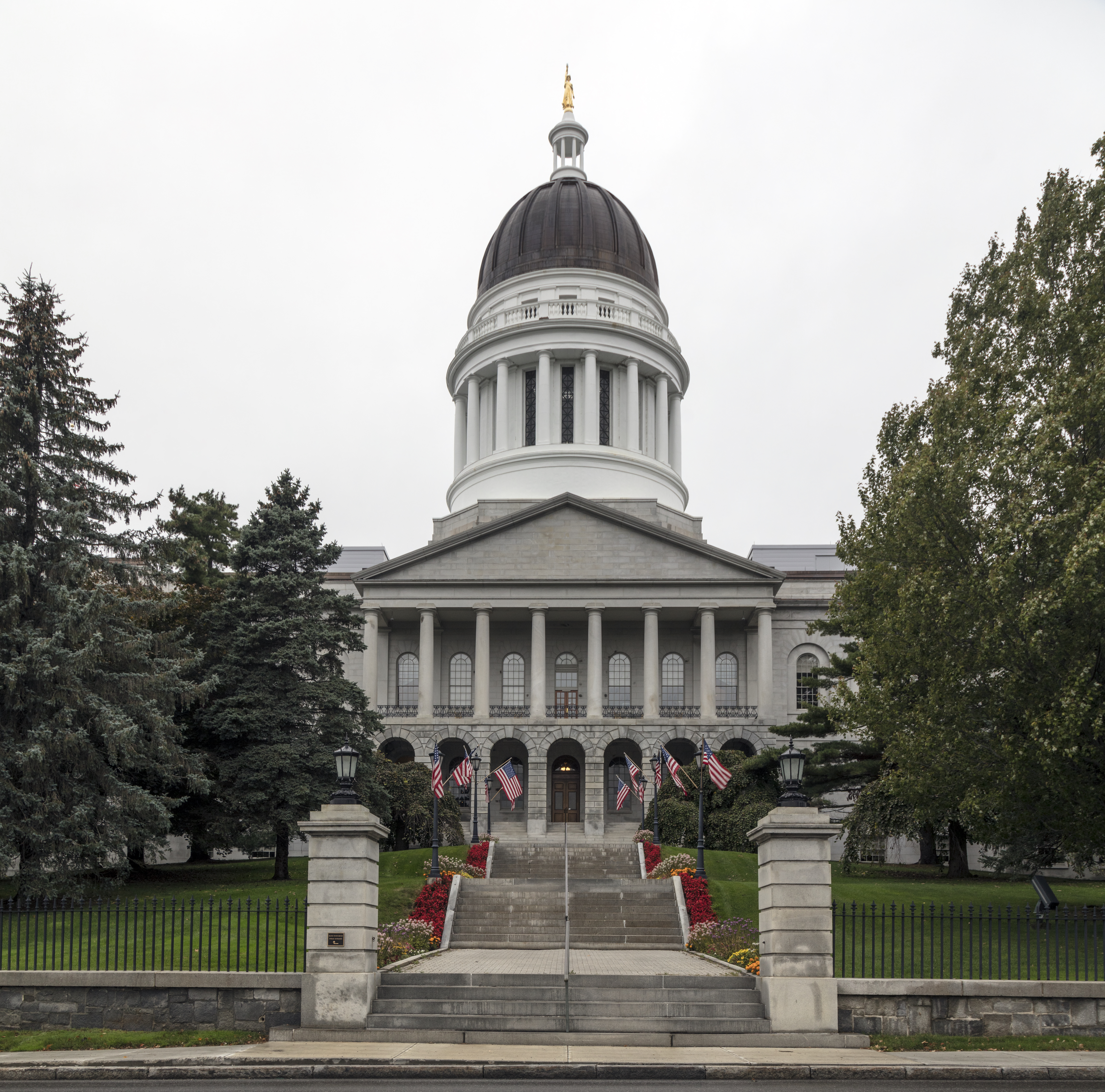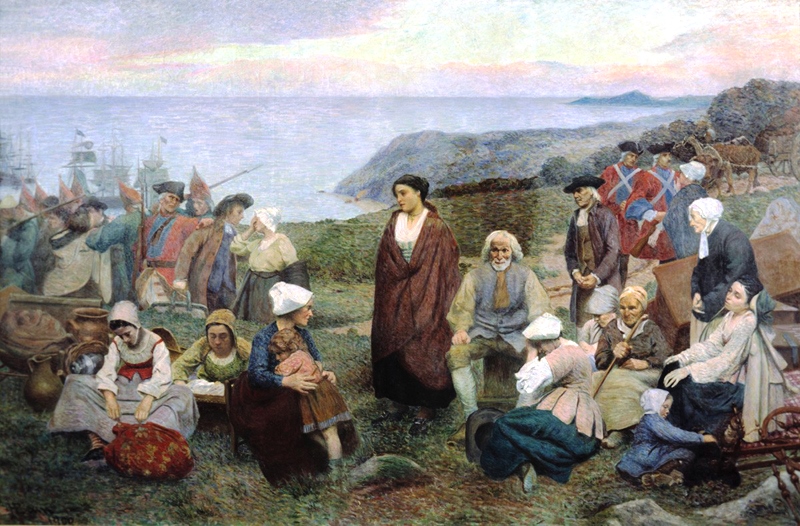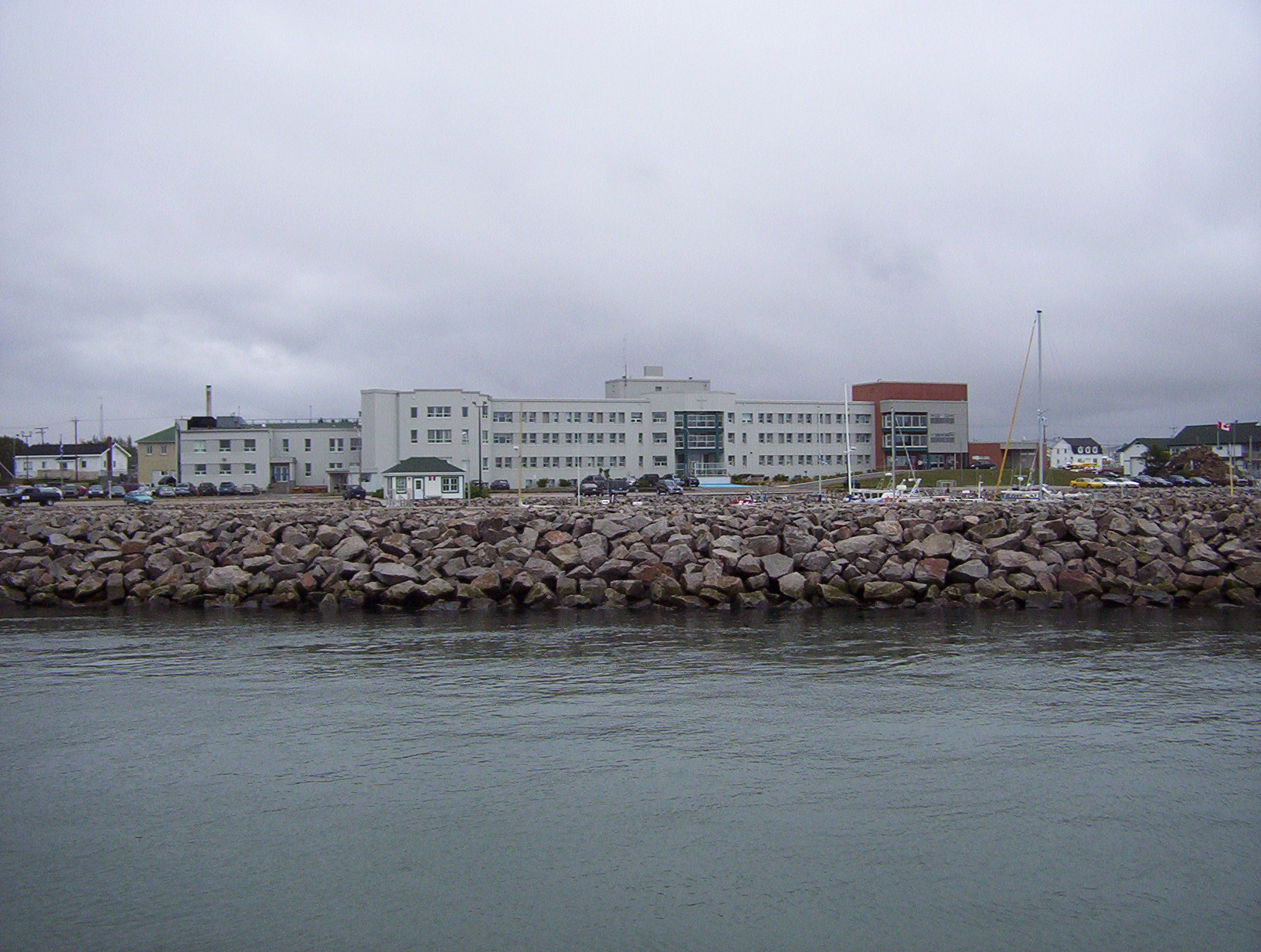|
Acadia (region)
Acadia is a North American cultural region in the Maritime provinces of Canada where approximately 300,000 French-speaking Acadians live. Acadia is a region without clear borders, and it is usually considered to be the north and east of New Brunswick as well as a few isolated localities in Prince Edward Island and Nova Scotia. Some also include a few localities in Quebec and/or Maine. The present-day region of Acadia's name is based the historic colony of Acadia, a colony of New France which covered the Maritimes, and that was inhabited by Acadians until the Deportation of the Acadians. A few Acadians managed to escape the deportation by fleeing to the most rural parts of the old territory and re-settling there, which is mostly the North and East of New Brunswick today. Their descendants came to dominate these areas, leading to the emergence of modern-day Acadia. Acadia has always been a poor region for a variety of reasons. For example, after the British conquest, a tes ... [...More Info...] [...Related Items...] OR: [Wikipedia] [Google] [Baidu] |
New Brunswick
New Brunswick (french: Nouveau-Brunswick, , locally ) is one of the thirteen Provinces and territories of Canada, provinces and territories of Canada. It is one of the three Maritime Canada, Maritime provinces and one of the four Atlantic Canada, Atlantic provinces. It is the only province with both Canadian English, English and Canadian French, French as its official languages. New Brunswick is bordered by Quebec to the north, Nova Scotia to the east, the Gulf of Saint Lawrence to the northeast, the Bay of Fundy to the southeast, and the U.S. state of Maine to the west. New Brunswick is about 83% forested and its northern half is occupied by the Appalachians. The province's climate is continental climate, continental with snowy winters and temperate summers. New Brunswick has a surface area of and 775,610 inhabitants (2021 census). Atypically for Canada, only about half of the population lives in urban areas. New Brunswick's largest cities are Moncton and Saint John, New Brun ... [...More Info...] [...Related Items...] OR: [Wikipedia] [Google] [Baidu] |
Matapédia, Quebec
Matapédia (former name: Saint-Laurent-de-Matapédia) is a municipality at the southern tip of the Gaspé Peninsula, in eastern Quebec, Canada. Matapédia is located along Quebec Route 132 on the border of New Brunswick. In addition to Matapédia itself, the municipality also includes the hamlets of Mann Settlement, Runnymede, and Matapédia West. Toponymy Its name may derive from the Mi'kmaq word ''matapegiag'', meaning "river junction", from the parts ''mata'' (junction) and ''pegiag'' (river), referring to the Matapédia River that crosses the town just before its confluence with the Restigouche River. Another source from the late nineteenth century indicates that the Mi'kmaq named the area ''Magabegeak'' which means "roughly flowing". It has also been spelled many different ways over time such as ''Matapediach'', ''Madapeguia', Matapeguia', Matapediac,'' ''Matakpediack,'' ''Madapeguia,'' ''Metapedia'', or ''Matapediac''. Residents and village expatriates are known as Ma ... [...More Info...] [...Related Items...] OR: [Wikipedia] [Google] [Baidu] |
Quiet Revolution
The Quiet Revolution (french: Révolution tranquille) was a period of intense socio-political and socio-cultural change in French Canada which started in Quebec after the election of 1960, characterized by the effective secularization of government, the creation of a state-run welfare state (''état-providence''), as well as realignment of politics into federalist and sovereigntist (or separatist) factions and the eventual election of a pro-sovereignty provincial government in the 1976 election. The Quiet Revolution typically refers to the efforts made by the Liberal government of Jean Lesage (elected in 1960) and sometimes Robert Bourassa (elected in 1970 after the Union Nationale's Daniel Johnson in 1966), though given the profound effect of the changes, most provincial governments since the early 1960s have maintained an orientation based on core concepts developed and implemented in that era. A primary change was an effort by the provincial government to take more dire ... [...More Info...] [...Related Items...] OR: [Wikipedia] [Google] [Baidu] |
Confederation Of Canada
Canadian Confederation (french: Confédération canadienne, link=no) was the process by which three British North American provinces, the Province of Canada, Nova Scotia, and New Brunswick, were united into one federation called the Dominion of Canada, on July 1, 1867. Upon Confederation, Canada consisted of four provinces: Ontario and Quebec, which had been split out from the Province of Canada, and the provinces of Nova Scotia and New Brunswick. Over the years since Confederation, Canada has seen numerous territorial changes and expansions, resulting in the current number of ten provinces and three territories. Terminology Canada is a federation and not a confederate association of sovereign states, which is what "confederation" means in contemporary political theory. It is nevertheless often considered to be among the world's more decentralized federations. The use of the term ''confederation'' arose in the Province of Canada to refer to proposals beginning in the 1850s to ... [...More Info...] [...Related Items...] OR: [Wikipedia] [Google] [Baidu] |
English Post-Reformation Oaths
The English Protestant Reformation was imposed by the English Crown, and submission to its essential points was exacted by the State with post-Reformation oaths. With some solemnity, by oath, test, or formal declaration, English churchmen and others were required to assent to the religious changes, starting in the sixteenth century and continuing for more than 250 years. Oath of Royal Supremacy (1534, renewed 1559) This oath was imposed in March 1534 (26 Henry VIII, c. 1). The title "Supreme Head" had first been introduced by Henry VIII into a decree of Convocation, 11 February 1531; and had been resisted by the clergy. Though it did not as yet have any religious significance, and might be a matter of compliment only, it might, they feared, receive another interpretation later. But acting under the advice of John Fisher, Warham, and others, they submitted after adding the conditional phrase, ''quantum per legem Dei licet''. Two years later a change had taken place, which had prev ... [...More Info...] [...Related Items...] OR: [Wikipedia] [Google] [Baidu] |
Deportation Of The Acadians
The Expulsion of the Acadians, also known as the Great Upheaval, the Great Expulsion, the Great Deportation, and the Deportation of the Acadians (french: Le Grand Dérangement or ), was the forced removal, by the British, of the Acadian people from parts of a Canadian-American region historically known as '' Acadia'', between 1755–1764. The area included the present-day Canadian Maritime provinces of Nova Scotia, New Brunswick, and Prince Edward Island, and the present-day U.S. state of Maine. The Expulsion, which caused the deaths of thousands of people, occurred during the French and Indian War (the North American theatre of the Seven Years' War) and was part of the British military campaign against New France. The British first deported Acadians to the Thirteen Colonies, and after 1758, transported additional Acadians to Britain and France. In all, of the 14,100 Acadians in the region, approximately 11,500 were deported, at least 5,000 Acadians died of dise ... [...More Info...] [...Related Items...] OR: [Wikipedia] [Google] [Baidu] |
New France
New France (french: Nouvelle-France) was the area colonized by Kingdom of France, France in North America, beginning with the exploration of the Gulf of Saint Lawrence by Jacques Cartier in 1534 and ending with the cession of New France to Kingdom of Great Britain, Great Britain and Bourbon Spain, Spain in 1763 under the Treaty of Paris (1763), Treaty of Paris. The vast territory of ''New France'' consisted of five colonies at its peak in 1712, each with its own administration: Canada (New France), Canada, the most developed colony, was divided into the districts of Quebec City, Québec, Trois-Rivières, and Montreal, Montréal; Hudson Bay; Acadia, Acadie in the northeast; Placentia, Newfoundland and Labrador, Plaisance on the island of Newfoundland (island), Newfoundland; and Louisiana (New France), Louisiane. It extended from Newfoundland to the Canadian Prairies and from Hudson Bay to the Gulf of Mexico, including all the Great Lakes of North America. In the 16th century, th ... [...More Info...] [...Related Items...] OR: [Wikipedia] [Google] [Baidu] |
Acadia
Acadia (french: link=no, Acadie) was a colony of New France in northeastern North America which included parts of what are now the Maritime provinces, the Gaspé Peninsula and Maine to the Kennebec River. During much of the 17th and early 18th centuries, Norridgewock on the Kennebec River and Castine at the end of the Penobscot River were the southernmost settlements of Acadia. The French government specified land bordering the Atlantic coast, roughly between the 40th and 46th parallels. It was eventually divided into British colonies. The population of Acadia included the various indigenous First Nations that comprised the Wabanaki Confederacy, the Acadian people and other French settlers. The first capital of Acadia was established in 1605 as Port-Royal. An English force from Virginia attacked and burned down the town in 1613, but it was later rebuilt nearby, where it remained the longest-serving capital of French Acadia until the British siege of Port Royal in 1 ... [...More Info...] [...Related Items...] OR: [Wikipedia] [Google] [Baidu] |
Maine
Maine () is a U.S. state, state in the New England and Northeastern United States, Northeastern regions of the United States. It borders New Hampshire to the west, the Gulf of Maine to the southeast, and the Provinces and territories of Canada, Canadian provinces of New Brunswick and Quebec to the northeast and northwest, respectively. The largest state by total area in New England, Maine is the List of U.S. states and territories by area, 12th-smallest by area, the List of U.S. states and territories by population, 9th-least populous, the List of U.S. states by population density, 13th-least densely populated, and the most rural of the List of states and territories of the United States, 50 U.S. states. It is also the northeastern United States, northeasternmost among the contiguous United States, the northernmost state east of the Great Lakes, the only state whose name consists of a single syllable, and the only state to border exactly one other U.S. state. Approximately half ... [...More Info...] [...Related Items...] OR: [Wikipedia] [Google] [Baidu] |
Quebec
Quebec ( ; )According to the Government of Canada, Canadian government, ''Québec'' (with the acute accent) is the official name in Canadian French and ''Quebec'' (without the accent) is the province's official name in Canadian English is one of the thirteen provinces and territories of Canada. It is the List of Canadian provinces and territories by area, largest province by area and the second-largest by Population of Canada by province and territory, population. Much of the population lives in urban areas along the St. Lawrence River, between the most populous city, Montreal, and the provincial capital, Quebec City. Quebec is the home of the Québécois people, Québécois nation. Located in Central Canada, the province shares land borders with Ontario to the west, Newfoundland and Labrador to the northeast, New Brunswick to the southeast, and a coastal border with Nunavut; in the south it borders Maine, New Hampshire, Vermont, and New York (state), New York in the United ... [...More Info...] [...Related Items...] OR: [Wikipedia] [Google] [Baidu] |
Acadian
The Acadians (french: Acadiens , ) are an ethnic group descended from the French who settled in the New France colony of Acadia during the 17th and 18th centuries. Most Acadians live in the region of Acadia, as it is the region where the descendants of a few Acadians who escaped the Expulsion of the Acadians (aka The Great Upheaval / ''Le Grand Dérangement'') re-settled. Most Acadians in Canada continue to live in majority French-speaking communities, notably those in New Brunswick where Acadians and Francophones are granted autonomy in areas such as education and health. Acadia was one of the 5 regions of New France. Acadia was located in what is now Eastern Canada's Maritime provinces, as well as parts of Quebec and present-day Maine to the Kennebec River. It was ethnically, geographically and administratively different from the other French colonies and the French colony of Canada (modern-day Quebec). As a result, the Acadians developed a distinct history and cultu ... [...More Info...] [...Related Items...] OR: [Wikipedia] [Google] [Baidu] |
Havre-Saint-Pierre
Havre-Saint-Pierre is a town on Pointe-aux-Esquimaux, which is on the Quebec north shore (Côte-Nord) of the Saint Lawrence River in Canada. Located along Route 138 some east of Sept-Îles, it is the largest town and seat of the Minganie RCM, and home to many government, municipal, and regional services. Historically, the town's first inhabitants came from the Magdalen Islands in the nineteenth century. As a result, the people of the town speak a dialect much more closely related to Acadian French than to Quebec French. Other important geological features near the town include the Romaine River to the north and west, les Chutes Manitou, on the Manitou River to the west, l'Ile du Havre, less than a kilometre offshore from the town, and Anticosti Island, which on clear days can be seen to the south of the town. History In 1857, a group of Acadian families from the Magdalen Islands, who had been deported from Savannah (Georgia, USA), settled on Eskimo Point (''Pointe aux Esq ... [...More Info...] [...Related Items...] OR: [Wikipedia] [Google] [Baidu] |










